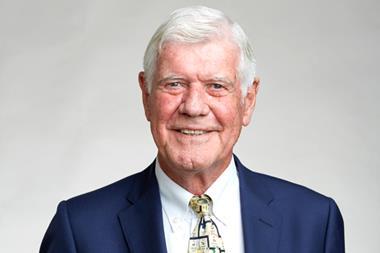Readers discuss hydrogen, names and the importance of code
Pure pyrolysis
Regarding the article ‘Heating homes with hydrogen is neither cheap nor environmentally friendly’, many discussions of hydrogen assume it can only be made cleanly and greenly by electrolysis of water. But pyrolysis of most organic matter produces hydrogen. A 2021 article by several scientists at two Max Planck institutes in Germany has a detailed analysis of the methods of producing hydrogen, including energetic and economic considerations. The authors conclude that pyrolysis of methane/natural gas is the best method. Hydrogen produced by this method can be very pure and there is useful byproduct. It was written before the German natural gas crisis, but for us with good supplies it is relevant.
Further I received a statement via my local MP that the UK government is backing methane reforming, which produces large amounts of carbon dioxide. Of course, this assumes that used oil wells can be filled with that gas! I suppose the government advisers are either ignorant of the aforementioned paper or that they know better. I personally would trust the Max Planck research. What do readers think?
David Greenslade CChem FRSC
Via email
Legacy code
I read the article on coding by Nessa Carson with some surprise. I had no idea there were so many chemists out there with, apparently, little to no coding skills or experience. As undergraduates at the University of St Andrews, UK, in the 1980s, we were required as part of our chemistry Honours course to undertake an assessed computing module, the deliverable of which was for each student to produce a working (if I remember correctly) S-Algol program. Having already read computational science in my first year, I had a head start on this and produced code which rendered raw NMR data in graphical form. These skills enabled me to transition into an IT management role later in my career, and were refreshed yet again during my MBA at Lancaster in the 2000s, which involved an introduction to programming with Microsoft Visual Basic as part of a data analysis module, and more recently, my ongoing doctoral studies at UEL requiring R (or Python if preferred) code to be submitted as part of the data science module.
Despite multiple career transitions involving three different degrees I never seem to have been able to avoid coding and I still remain in the chemical industry after over 30 years thus, as Carson advises, have ‘kept a foot in both camps’!
Adrian Ford CChem MRSC
Via email
Calling names
The editorial by Philip Robinson raises an important question concerning naming of organic natural products. This has to do with the deplorable way of naming them alphanumerically, like car numberplates, or even worse just mentioning by a consecutive number in a text together with other anonymous and named compounds.
In this way, some compounds of interest may be missed. In addition, they are problematical in oral communication: speaking about WS-5995A is just absurd, whereas encounters in written speech hardly can spark our interest. As Primo Levi has put it, ‘When we give a name to something we don’t know, we immediately have the impression that we know it a little better.’
Here is an idea to be considered: I suggest that anybody interested should be encouraged to give a name to a nameless favourite molecule. Such names should be advertised in some way (maybe in Chemistry World), accompanied by their structures and a short description of their properties.
For a start, I suggest ‘diphosphotropaeolin’, a name composed of five Greek words, for a unique compound found in the edible and pharmaceutical plant Tropaeolum tuberosum, with strong antimicrobial properties. Its systematic name is [3,5-bis-(dimethylethyl)-4-hydroxyphenyl]ethenylidene-bis-phosphonic acid tetraethyl ester.
A Varvoglis MRSC
Thessaloniki, Greece
Qualified memories
Like David Newman, I too qualified for GRIC by external examination, in December 1965. I was then 23 years old. The pass rate was 18%.
My route to qualification was similar to previous correspondents – ONC, HNC and Part II GRIC by part-time day release and evening classes. I attended three London area polytechnics to get the required extra ancillary subjects.
Subsequently I completed an MSc in advanced analytical chemistry at Bristol University. The majority of my post-master’s career was in the white spirits division of the Distillers Co., which is now Diageo.
Irving Lee CChem MRSC
Via email
Following on from David Newman’s letter, as an ex-secondary modern schoolboy with a love (but little knowledge) of chemistry, I went to Canterbury technical college at the age of 15. There I met an apprentice miner from the Kent coalfield, who spoke with reverence and awe about his laboratory head, who was an associate of the Royal Institute of Chemistry (ARIC). I was inspired by him to strive for that qualification. I joined the BP Kent oil refinery at the age of 19, where I achieved Part 1. Being by that time married and unable to live on my income, I left BP and joined Shell Research, salary £850 per year, where I obtained my Part 2 qualification by day release. It was a dream come true. I went on to obtain a PhD in biochemistry.
Over the years the status of the qualification has decreased. No longer is MRSC the gold standard that it was. In my latter days with Shell, people passing their Part 2 exams were promoted to a more senior technician grade. We have Chartered Chemist as a mark of competence, but the kudos which ARIC bestowed is gone for ever. That must surely be regretted by members. The passing of years is one of the great benefits of growing old; things can be seen in long perspective.
Michael Baldwin CChem FRSC
Sittingbourne, UK
Not the lowest
Christian Anfinsen’s 1973 experiment indeed showed that the 3D structure of a protein could be encoded solely by its sequence. However, it did not and could not determine that this structure to which it reverted was the lowest free energy. The existence of prions and other ‘amyloid’ proteins show that often it is not (same sequence, very different structures).
Douglas Kell MRSC
Liverpool, UK
Chemistry World welcomes letters, which should be concise (normally fewer than 300 words) and timely. Those selected for publication are subject to editing for clarity and length. Letters should be marked ‘for publication’ and sent to chemistryworld@rsc.org.
We do not routinely acknowledge letters.












No comments yet